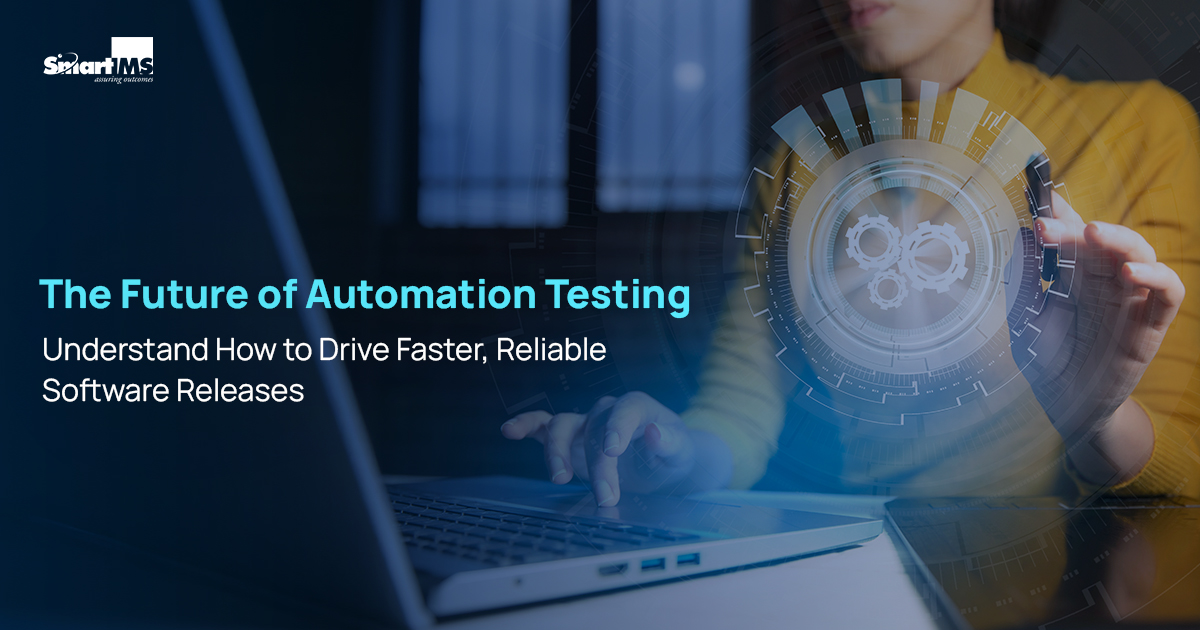In this fast-paced world delivering high-quality software products at speed is essential, and test automation plays a vital role in achieving this. It’s important to understand that the practices and tools we rely on needs a constant change with the technology advancements.
To stay ahead, it’s crucial to understand the key trends shaping the future of test automation and follow best practices that ensure an effective and sustainable automation strategy.
Let’s get started!
1. Key Trends in Test Automation
AI and Machine Learning Integration
There’s a significant transformation of Test Automation with the introduction of Artificial Intelligence (AI) and Machine Learning (ML). AI-powered tools can analyse past test results to improve test case creation, identify defects, and even predict potential failure points allowing adaptive testing that can handle software changes more effectively than traditional methods.
Robotic Process Automation
Robotic Process Automation (RPA) is an emerging technological innovation being implemented in almost every sector and has achieved success in business process optimization and reducing costs. RPA has been gaining popularity because it offers several benefits over traditional process automation methods. When applied correctly and in the right situation, it can be faster, more accurate, and easier to scale than more traditional methods of working in the digital space. Additionally, incorporating a shift left approach can make testing more efficient and rapid by catching issues early in the development cycle.
Test Automation for Non-Functional Testing
While functional testing has been the focus of automation, there is a substantial growth for automating non-functional tests like performance, security, and scalability. With the increasing complexity of modern applications, it’s essential to validate that your software performs well under stress and remains secure from threats.
Low-Code/No-Code Automation Tools
Low-code and no-code automation testing tools allow users to create, execute, and manage test cases with minimal or no coding knowledge. They feature user friendly interfaces such as drag-and-drop functionality, visual workflows, and prebuilt templates, making them accessible to a broader audience, including non-technical stakeholders like business analysts or product managers.
- Low-Code Tools: Require minimal coding for customization, providing flexibility to advanced users.
- No-Code Tools: Offer completely visual interfaces, enabling users to automate tests without writing any code.
Now, let’s go through some of the best practices to ensure efficient automation testing for businesses.
2. 5 Best Practices for Effective Automation Testing
Shift Toward Autonomous Testing
- Implement autonomous testing tools that can execute, analyse, and adapt tests without human intervention.
- Enable systems to generate intelligent reports, highlight areas of concern, and suggest resolutions.
Integrate Automation into Observability Pipelines
- Combine test automation with observability tools (e.g., Datadog, Prometheus) to monitor system behaviour during and after test execution.
- Use observability to identify performance bottlenecks, memory leaks, or system crashes dynamically.
Prioritize Real-World Simulations
- Use tools that simulate real-world user behaviour, including network delays, device variability, and geographic conditions.
- Adopt digital twins to replicate production environments for testing critical scenarios.
Focus on Modular and Reusable Test Design
- Design test scripts to be modular, independent, and reusable across multiple projects.
- Use a data-driven or keyword-driven approach for maximum flexibility and efficiency.
Human Involvement is Still Crucial
- While automation can handle repetitive tasks, human testers still play an essential role.
- Automated tests cannot replace exploratory testing, creativity, or in-depth analysis.
- Skilled testers can identify edge cases, domain specific scenarios that require subject matter expertise and address issues that automated systems might miss.
Conclusion
The future of test automation lies in intelligent, integrated, and user-friendly systems that align with agile and DevOps practices. By leveraging AI, low-code solutions, and scalable cloud platforms, organizations can accelerate testing, improve quality, and remain competitive in an ever-changing software landscape.
So, Ready to elevate your automation testing strategy? Contact US



